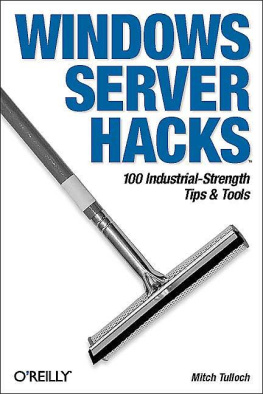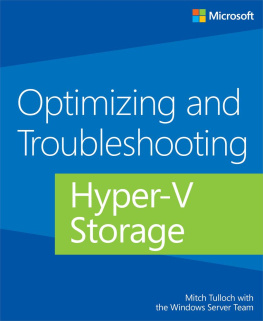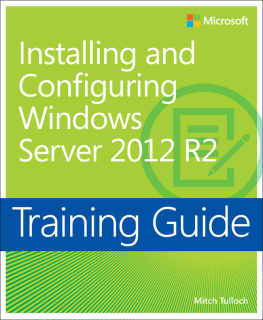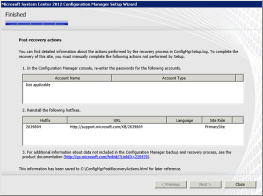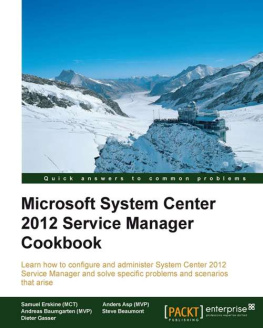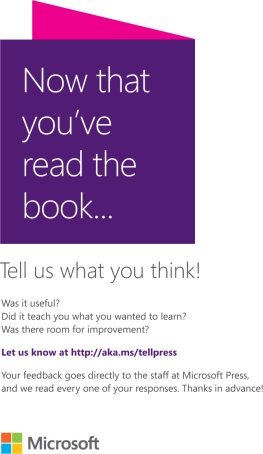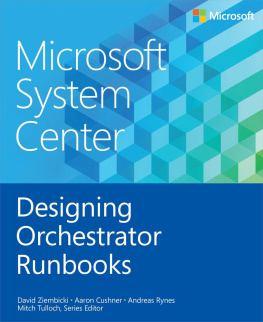PUBLISHED BY
Microsoft Press
A Division of Microsoft Corporation
One Microsoft Way
Redmond, Washington 98052-6399
Copyright 2013 Microsoft Corporation
All rights reserved. No part of the contents of this book may be reproduced or transmitted in any form or by any means without the written permission of the publisher.
Library of Congress Control Number: 2013949895
ISBN: 978-0-7356-8283-2
Microsoft Press books are available through booksellers and distributors worldwide. If you need support related to this book, email Microsoft Press Book Support at mspinput@microsoft.com. Please tell us what you think of this book at http://www.microsoft.com/learning/booksurvey.
Microsoft and the trademarks listed at http://www.microsoft.com/about/legal/en/us/IntellectualProperty/Trademarks/EN-US.aspx are trademarks of the Microsoft group of companies. All other marks are property of their respective owners.
The example companies, organizations, products, domain names, email addresses, logos, people, places, and events depicted herein are fictitious. No association with any real company, organization, product, domain name, email address, logo, person, place, or event is intended or should be inferred.
This book expresses the authors views and opinions. The information contained in this book is provided without any express, statutory, or implied warranties. Neither the authors, Microsoft Corporation, nor its resellers, or distributors will be held liable for any damages caused or alleged to be caused either directly or indirectly by this book.
Acquisitions Editor: Anne Hamilton
Developmental Editor: Karen Szall
Project Editors: Carol Dillingham and Valerie Woolley
Editorial Production: Christian Holdener, S4Carlisle Publishing Services
Copyeditor: Roger LeBlanc
Indexer: Jean Skipp
Contents
What do you think of this book? We want to hear from you!
Microsoft is interested in hearing your feedback so we can continually improve our books and learning resources for you. To participate in a brief online survey, please visit:
microsoft.com/learning/booksurvey
What do you think of this book? We want to hear from you!
Microsoft is interested in hearing your feedback so we can continually improve our books and learning resources for you. To participate in a brief online survey, please visit:
microsoft.com/learning/booksurvey
Foreword
It is an exciting time to be in IT, as we are on the frontier of yet another major evolution in the datacenter. With the explosive growth of server virtualization, we have seen the benefits of hardware consolidation, higher-availability and mobility, improved application compatibility, simplified deployment and management, and multitenancy, all of which have led to reduced operating costs. Many enterprises are just starting their journey to the next phase, the private cloud, which through the virtualization of networking and storage is simplifying resource pooling and allocation. Self-service and automation capabilities are freeing up time for the IT staff by eliminating repetitive tasks and allowing them to focus on adding more value to the business through new and improved service offerings. Now Microsoft is leading the industry in the next phase of this evolution with Windows Server 2012 R2, System Center 2012 R2 and Windows Azurethe transition to the hybrid cloud.
The hybrid cloud provides a datacenter without boundaries, allowing IT to take advantage of both on-premises resources and third-party hosting providers, as well as the public cloud using Windows Azure. Services should be able to run on any of these three clouds while providing an identical end-user experience. However, this consistency across clouds needs to happen for everyone involved in the lifecycle of these enterprise applications, and Microsoft is uniquely positioned to provide these capabilities to all consumers of IT services.
Now developers can use Visual Studio and Team Foundation Server to code applications that run on and between these clouds. Database administrators can use SQL Server and SQL Azure to consistently analyze and manage data from any cloud. Security experts can use Active Directory to secure and federate their users across clouds and from any device. Last, but certainly not least, IT professionals can create Hyper-V virtual machines and unify the management of their datacenter resources and applications using System Center.
Microsofts strength in this space comes from almost two decades of experience running cloud services, starting with MSN Hotmail in 1997, and today offering the broadest cloud portfolio in the world, with over 200 distributed services. These include Xbox Live with 40+ million gamers, Office Web Apps with 50+ millions users, Outlook.com with 60+ million accounts, SkyDrive with 200+ million users, and Skype with 280+ millions users, not to mention the billions of objects managed daily by Bing, Exchange Hosted Services, and Windows Azure. It is from this experience that Microsoft has learned how to efficiently configure and manage cloud services on any scale, and weve incorporated the best practices weve identified into the tools we provide our customers in Windows Server and System Center.
Throughout this book, you will see the latest enhancements from System Center 2012 R2 to provide the most advanced and integrated datacenter management tools throughout the stack, supporting diverse hardware, hypervisors, operating systems, applications and clouds, and allowing you to lead your company toward the datacenter of the future. We hope you are ready to take this journey with us!
Symon Perriman, Senior Technical Evangelist, Microsoft Corporation
Introduction
Microsoft System Center is one of the three pillars of Microsofts Cloud OS vision that will transform the traditional datacenter environment, help businesses unlock insights in data stored anywhere, enable the development of a wide range of modern business applications, and empower IT to support users who work anywhere while being able to manage any device in a secure and consistent way. The other two pillars of the Cloud OS are, of course, Windows Server 2012 R2 and Windows Azure, and Microsoft Press has recently released free Introducing books on these platforms as well.
Whether you are new to System Center or are already using it in your business, this book has something that should interest you. The capabilities of each component of System Center 2012 R2 are first described and then demonstrated chapter by chapter. Real-world and under-the-hood insights are also provided by insiders at Microsoft who live and breathe System Center, and those of you who are experienced with the platform will benefit from the wisdom and experience of these experts. We also included a list of additional resources at the end of each chapter where you can learn more about each System Center component.
Acknowledgments
Three groups of people have helped make this book possible, and as authors wed like to thank them all here.
First, the following experts at Microsoft have contributed sidebars that explain and demonstrate some of the powerful and exciting capabilities in System Center 2012 R2:
Chris Samson
David Apolinar
Heath Lawson
John McCabe
John Savill
Marton Csiki
Mike Gaal
MS Anand
Nick Rosenfeld
Rob Davies
Second, the following Microsoft insiders have peer-reviewed the content of this book to help us ensure its as accurate as possible:
Next page

